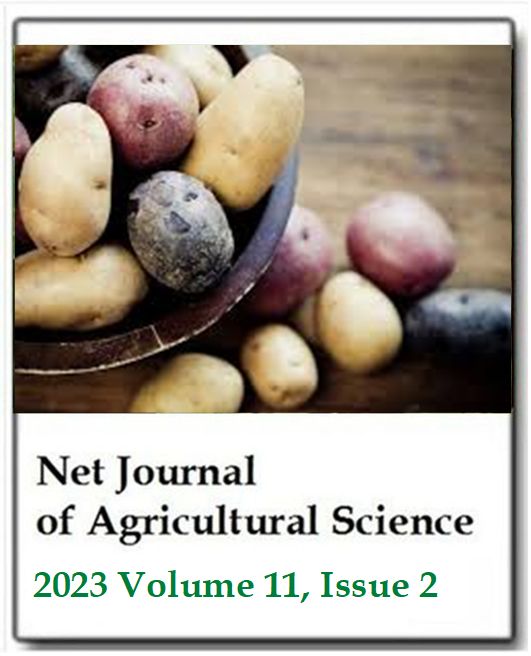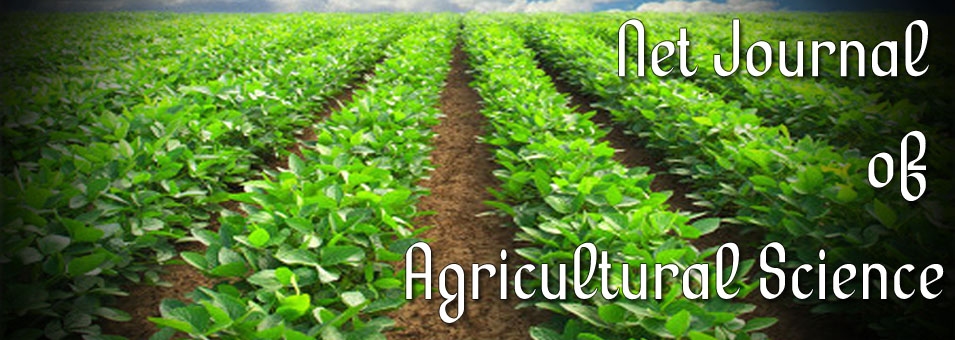Quality, hydrocyanic acid content and acceptability of cassava peels ensiled with brewers’ spent grains
Unah, U. L., Inyang, U. A. and Solomon, I. P.Net Journal of Agricultural Science
Published: June 16 2023
Volume 11, Issue 2
Pages 25-28
ABSTRACT
In this study, the acceptability of 21-day-old cassava peels ensiled with spent brewer's grains was investigated along with its qualitative properties and hydrocyanic acid content. For the manufacture of silage diets, cassava peels (CPL) and brewers' wasted grain (BSG) were combined as follows: 100% CPL (Diet 1), 50% CPL + 50% BSG (Diet 2), and 40% CPL + 60% BSG (Diet 3). The pH of the silage ranged from 3.76 - 4.63. Diet 1 had a higher aroma of alcohol than the other silages, which were all typically alcoholic. The value of crude protein (CP) increased when more BSG was included. From the analysis, it was shown that the cyanide content of cassava peels reduced to 15.18 mg kg-1 when ensiled from 187.50 mg kg-1 of the unensiled cassava peels. This indicates that ensiling reduced the antinutritional factor present in the cassava peels. The result of acceptability trials showed that there was a significant difference (p < 0.05) in feed dry matter (DM) intake (ranged 311.0 – 514.5 g d-1) with diet 3 recording the highest significant (p < 0.05) value of 514.5 g d-1. Diet 3 showed good quality silage, enhanced crude protein composition and could support small ruminants during off periods as against sole feeding of cassava peels.
Keywords: Cassava peels, brewers’ spent grains, silage, hydrocyanic acid.
Full Text PDF
ISSN: 2315-9766
